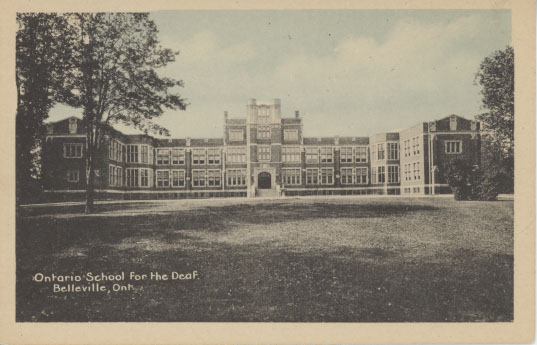Just like all languages evolve through communities of users, some ASL vocabulary in Canada varies from the vocabulary used in the United States and there is some ASL dialectical variation across regions of Canada. The Canadian Dictionary of ASL (Bailey and Dolby, 2002) features lexical variation representing four major regions (Pacific, Prairie, Ontario and Atlantic) across Canada.
Historically, ASL has thrived in residential Deaf schools where large numbers of Deaf children congregate and share their rich heritage, language, history, literature and experience. This is where Deaf children are naturally enculturated in the Deaf community and where many Deaf leaders emerge. The first schools for Deaf students opened in Canada in Quebec City in 1831 and in Belleville Ontario in 1870.
Deaf schools and ASL are the heart of Deaf culture. They are now under threat of being closed across the country and increasingly more Deaf children are mainstreamed. This is important in understanding the cultural context of the Deaf community. Like all communities, the Deaf community is not a monolith. In addition to ASL vocabulary, grammatical usage quickly distinguishes an ASL user who grew up in a school for the Deaf from a signer who grew up in a self-contained classroom in a public school, from a signer who uses an interpreter in a mainstreamed public school classroom and from a person who was raised orally with no sign language. Reflecting the linguistic subtleties within the Deaf community becomes especially important in sensitive and perceptive casting decisions for theatre productions in order to provide believable characters representing the real lives of Deaf people. Deaf audiences and those who interface with members of the Deaf community recognize immediately if cast and character portrayals in a production are accurate, based on use of sign language vocabulary and grammar.


